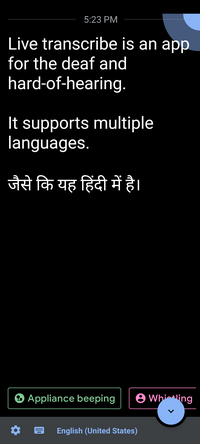
Google Contacts is a
Transcription software assists in the conversion of human speech into a text transcript. Audio or video files can be transcribed manually or automatically. Transcriptionists can replay a recording several times in a transcription editor and type what they hear. By using transcription hot keys, the manual transcription can be accelerated, the sound filtered, equalized or have the tempo adjusted when the clarity is not great. With speech recognition technology, transcriptionists can automatically convert recordings to text transcripts by opening recordings in a PC and uploading them to a cloud for automatic transcription, or transcribe recordings in real-time by using digital dictation. Depending on quality of recordings, machine generated transcripts may still need to be manually verified. The accuracy rate of the automatic transcription depends on several factors such as background noises, speakers' distance to the microphone, and accents.
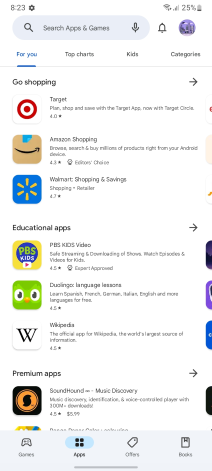
Google Play, also known as the Google Play Store or Play Store and formerly Android Market, is a digital distribution service operated and developed by Google. It serves as the official app store for certified devices running on the Android operating system and its derivatives, as well as ChromeOS, allowing users to browse and download applications developed with the Android software development kit (SDK) and published through Google. Google Play has also served as a digital media store, offering games, music, books, movies, and television programs. Content that has been purchased on Google Play Movies & TV and Google Play Books can be accessed on a web browser and through the Android and iOS apps.

Google Keep is a note-taking service included as part of the free, web-based Google Docs Editors suite offered by Google. The service also includes: Google Docs, Google Sheets, Google Slides, Google Drawings, Google Forms and Google Sites. Google Keep is available as a web application as well as mobile app for Android and iOS. The app offers a variety of tools for taking notes, including texts, lists, images, and audio. Text from images can be extracted using optical character recognition and voice recordings can be transcribed. The interface allows for a single-column view or a multi-column view. Notes can be color-coded and labels can be applied to notes to categorize them. Later updates have added functionality to pin notes and to collaborate on notes with other Keep users in real-time.

Wear OS is a version of Google's Android operating system designed for smartwatches and other wearables. By pairing with mobile phones running Android version 6.0 "Marshmallow" or newer, or iOS version 10.0 or newer with limited support from Google's pairing application, Wear OS integrates Google Assistant technology and mobile notifications into a smartwatch form factor. Wear OS is closed-source, in contrast to the free and open-source Android.
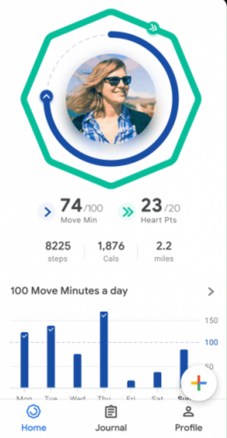
Google Fit is a health-tracking platform developed by Google for the Android operating system, Wear OS, and iOS. It is a single set of APIs that blends data from multiple apps and devices. Google Fit uses sensors in a user's activity tracker or mobile device to record physical fitness activities, which are measured against the user's fitness goals to provide a comprehensive view of their fitness.

Speech Recognition & Synthesis, formerly known as Speech Services, is a screen reader application developed by Google for its Android operating system. It powers applications to read aloud (speak) the text on the screen, with support for many languages. Text-to-Speech may be used by apps such as Google Play Books for reading books aloud, Google Translate for reading aloud translations for the pronunciation of words, Google TalkBack, and other spoken feedback accessibility-based applications, as well as by third-party apps. Users must install voice data for each language.
Google Talkback is an accessibility service for the Android operating system that helps blind and visually impaired users to interact with their devices. It uses spoken words, vibration and other audible feedback to allow the user to know what is happening on the screen allowing the user to better interact with their device. The service is pre-installed on many Android devices, and it became part of the Android Accessibility Suite in 2017. According to the Google Play Store, the Android Accessibility Suite has been downloaded over five billion times, including devices that have the suite preinstalled.
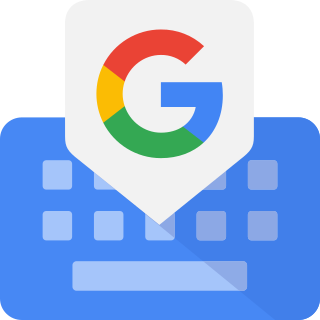
Gboard is a virtual keyboard app developed by Google for Android and iOS devices. It was first released on iOS in May 2016, followed by a release on Android in December 2016, debuting as a major update to the already-established Google Keyboard app on Android.

Google Allo was an instant messaging mobile app by Google for the Android and iOS mobile operating systems, with a web client available in some web browsers. It closed on March 12, 2019.
Google Duo was a proprietary voice over IP (VoIP) and videotelephony service released in 2016 by Google and merged into its Google Meet product in 2022. It was available for Android, IOS and web browsers. It let users make and receive one-to-one and group audio and video calls with other Duo users in high definition, using end-to-end encryption by default. Duo could be used either with a phone number or a Google account, allowing users to call someone from their contact list.

Google Lens is an image recognition technology developed by Google, designed to bring up relevant information related to objects it identifies using visual analysis based on a neural network. First announced during Google I/O 2017, it was first provided as a standalone app, later being integrated into Google Camera but was reportedly removed in October 2022. It has also been integrated with the Google Photos and Google Assistant app and with Bard as of 2023.

Files is a file management app developed by Google for file browsing, media consumption, storage clean-up and offline file transfer. It was released by Google on December 5, 2017 with a custom version for China being released on May 30, 2018.
Crowdsource is a crowdsourcing platform developed by Google intended to improve a host of Google services through the user-facing training of different algorithms.

Android 10 is the tenth major release and the 17th version of the Android mobile operating system. It was first released as a developer preview on March 13, 2019, and was released publicly on September 3, 2019.

Otter.ai, Inc. is a Mountain View, California-based technology company that develops speech to text transcription applications using artificial intelligence and machine learning. Its software, called Otter, shows captions for live speakers, and generates written transcriptions of speech.
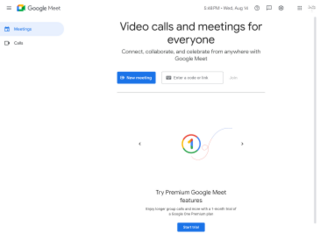
Google Meet is a video communication service developed by Google. It is one of two apps that constitute the replacement for Google Hangouts, the other being Google Chat. It replaced the consumer-facing Google Duo on November 1, 2022, with the Duo mobile app being renamed Meet and the original Meet app set to be phased out.

Google Messages is a text messaging software application developed by Google for its Android and Wear OS mobile operating systems, while it's also available via the Web.

Nearby Share was a functionality developed by Google that allows data to be transferred between devices via Bluetooth, Wi-FI Direct or Internet. In 2024, it was merged into Samsung's Quick Share. It was available for Android, ChromeOS and Microsoft's Windows. It was first released on August 4, 2020.
